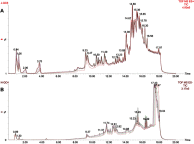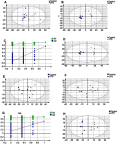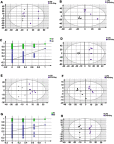UPLC-Q-TOF-MS profiling of the hippocampus reveals metabolite biomarkers for the impact of Dl-3-n-butylphthalide on the lipopolysaccharide-induced rat model of depression
- PMID: 31371967
- PMCID: PMC6628600
- DOI: 10.2147/NDT.S203870
UPLC-Q-TOF-MS profiling of the hippocampus reveals metabolite biomarkers for the impact of Dl-3-n-butylphthalide on the lipopolysaccharide-induced rat model of depression
Abstract
Purpose: An increasing body of evidence reveals that inflammation is involved in the pathological mechanisms of depression. Our previous basic research confirmed that Dl-3-n-butylphthalide (NBP) possess anti-inflammatory properties. However, studies investigating metabolite biomarkers for the involvement of NBP in hippocampus tissue in the lipopolysaccharide (LPS)-induced rat model of depression are currently limited. Thus, the aim of this study was to identify metabolite biomarkers in the hippocampus for the impact of NBP in this model of depression.
Material and methods: Male Sprague-Dawley rats were randomly allocated to one of the following three groups (n=6): Control, LPS-induced rat model of depression (LPS), and NBP involvement in the LPS-induced rat model of depression (LPS+NBP). Ultra-high-performance liquid chromatography-mass spectroscopy was used to determine the hippocampal metabolites. Multivariate statistical analysis was performed to identify differentially expressed hippocampal metabolites in the three groups.
Results: Most of the identified differentially expressed metabolites were related to amino acid, lipid, energy, and oxidative stress metabolism. Additionally, metabolites were eventually connected to different pathways and metabolic networks, which may partly account for the pathophysiological process of depression.
Conclusion: The present findings provide insight into the anti-inflammatory effects of NBP, and further elucidate the pathophysiological mechanisms underlying inflammation-induced depression.
Keywords: Dl-3-n-butylphthalide; inflammation; lipopolysaccharide; metabolite biomarkers; ultra-high-performance liquid chromatography-mass spectroscopy.
Conflict of interest statement
The authors report no conflicts of interest in this work.
Figures





References
-
- Lee DS, Kwon KH, Cheong SH. Taurine chloramine suppresses LPS-induced neuroinflammatory responses through Nrf2-mediated heme oxygenase-1 expression in mouse BV2 microglial cells. Adv Exp Med Biol. 2017;975:131–143. - PubMed
LinkOut - more resources
Full Text Sources

